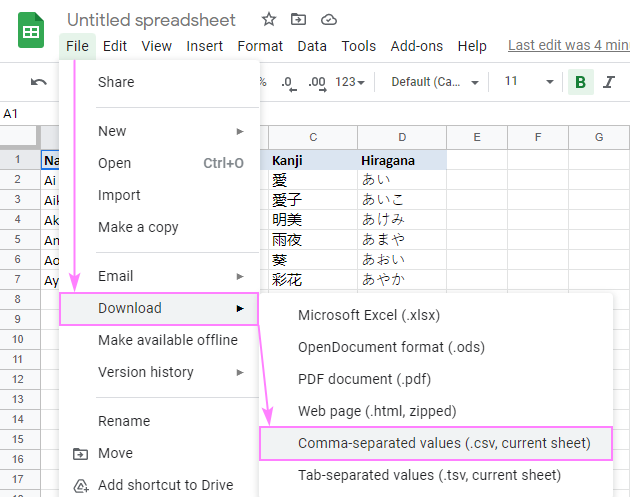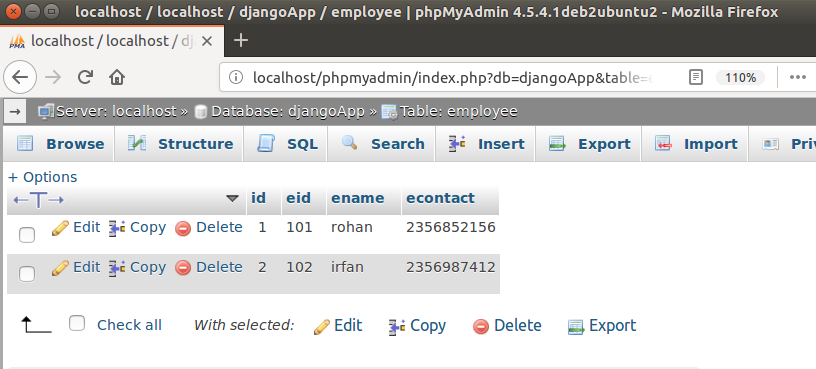| Uploader: | Arttrain |
| Date Added: | 14.06.2016 |
| File Size: | 3.29 Mb |
| Operating Systems: | Windows NT/2000/XP/2003/2003/7/8/10 MacOS 10/X |
| Downloads: | 48157 |
| Price: | Free* [*Free Regsitration Required] |
How to Export CSV File With Django - Django
How to download large csv file in Django, streaming the response, streaming large csv file in django, downloading large data in django without timeout, using blogger.comingHttpResponse to stream response in Django, Generating and transmitting large CSV files in django. Dec 01, · Django adaptor is a tool which allow you to transform easily a CSV/XML file into a python object or a django model instance. django-importcsv: django-csvimport is a generic importer tool to allow the upload of CSV files for populating data. Jun 28, · We are going to use Python in-built CSV library which comes by default with Python. With this tutorial, you will be able to read write a CSV file and download it with Django. Source Code is also available on GitHub. Setup. Create a folder and put all the files inside it. Create a virtual environtment - .

Create a downloadable csv file with django
Python comes with a CSV library, csv. For example, by streaming a file that takes a long time to generate you can avoid a load balancer dropping a connection that create a downloadable csv file with django have otherwise timed out while the server was generating the response.
In this example, we make full use of Python generators to efficiently handle the assembly and transmission of a large CSV file:. Alternatively, you can use the Django template system to generate CSV. This is lower-level than using the convenient Python csv module, but the solution is presented here for completeness. The idea here is to pass a list of items to your template, and have the template output the commas in a for loop. The only difference between this example and the previous example is that this one uses template loading instead of the CSV module.
This short template iterates over the given data and displays a line of CSV for each row, create a downloadable csv file with django. You can use either of these techniques to output any text-based format you can dream of. You can also use a similar technique to generate arbitrary binary data; see Outputting PDFs with Django for an example. Offline Django 3. Django is a registered trademark of the Django Software Foundation.
Django The web framework for perfectionists with deadlines. All money goes to the DSF! Search: Search. Getting Help el es fr id ja ko pl pt-br zh-hans Language: en 1. In this example, we make full use of Python generators to efficiently handle the assembly and transmission of a large CSV file: import csv from django. The range is based on the maximum number of rows that can be handled by a single sheet in most spreadsheet applications. Integrating Django with a legacy database.
Outputting PDFs with Django. Support Django! Donate today!
Python for Automation #2: Download a File from Internet with Python
, time: 8:18Create a downloadable csv file with django

If you want to allow exporting the data present in your django-tables2 tables to various formats, you must install the tablib package: Adding ability to export the table data to a class based views looks like this: Now, if you append _export=csv to the query string, the browser will download a . The above code will download a CSV file with name blogger.com with data inside it. Writing CSV File From a Dictionary # csv_app/blogger.com import csv from blogger.com import HttpResponse # Writing CSV File From a Dictionary def csv_dictionary_write(request): # Create the HttpResponse object with the appropriate CSV header. Python comes with a CSV library, csv. The key to using it with Django is that the csv module’s CSV-creation capability acts on file-like objects, and Django’s HttpResponse objects are file-like objects. Here’s an example.

No comments:
Post a Comment